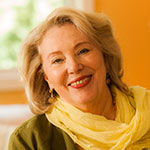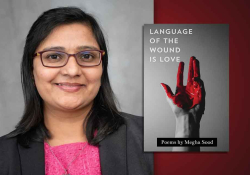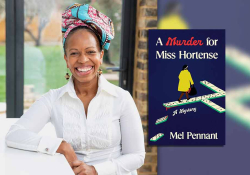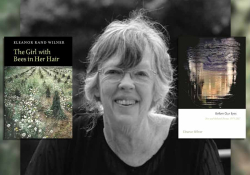“Everything alive aches for more”: A Conversation with Kari Gunter-Seymour, Poet Laureate of Ohio
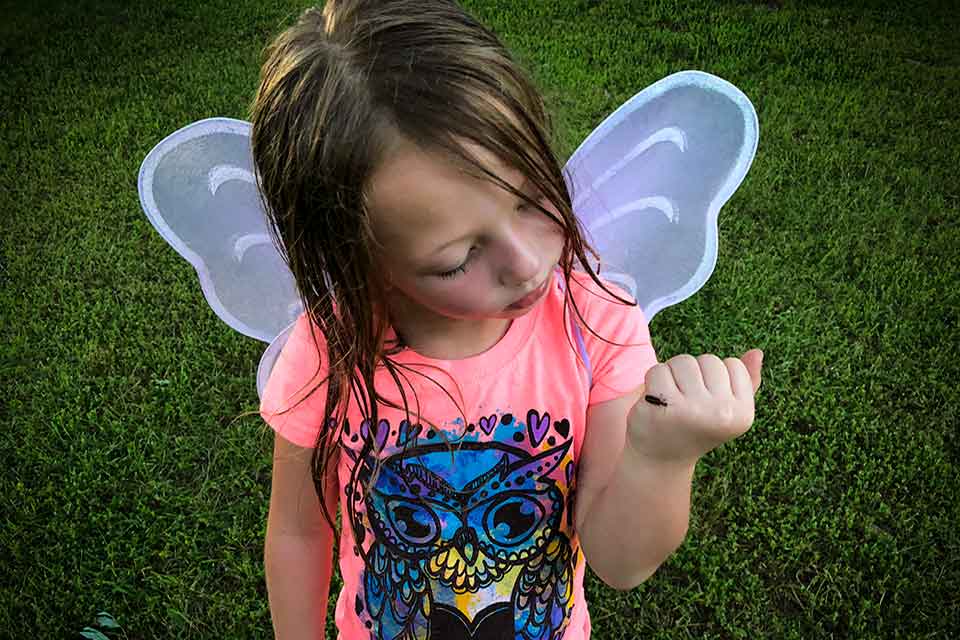
Kari Gunter-Seymour (b. 1955) is having a moment—soon to become two years of moments since she was appointed in June 2020 to a two-year term as the Poet Laureate of Ohio. Her 2020 collection, A Place So Deep Inside America It Can’t Be Seen, earned her the additional title of Ohio Poet of the Year. Former US Poet Laureate Natasha Trethewey chose Gunter-Seymour’s words as the final lines in the PBS American Portrait crowdsourced video poem, “Remix: For My People”: “Every word a sepulcher, every syllable a stone rolled away.” In 2021 Gunter-Seymour was one of twenty-three poets laureate, municipal and state, to receive a $50,000 fellowship grant from the Academy of American Poets, funded by the Andrew W. Mellon Foundation. She recently accepted an additional position as artist-in-residence in the “Pages” literacy program for the Wexner Center for the Arts at Ohio State University. Formerly Poet Laureate of Athens, Ohio, where she taught graphic communications at Ohio University, Gunter-Seymour currently lives in Albany, Ohio.
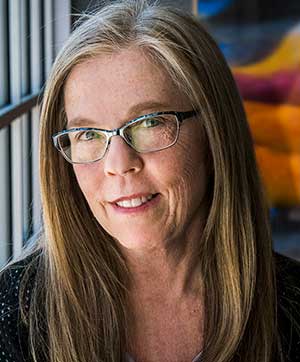 Renee Shea: Your tenure as poet laureate began and continues in an unprecedented and challenging situation. How’s it going?
Renee Shea: Your tenure as poet laureate began and continues in an unprecedented and challenging situation. How’s it going?
Kari Gunter-Seymour: As we all know, the pandemic struck really hard in March 2020, so by the time I was appointed in June, I had already immersed myself in a great deal of virtual programming. In the first six months of my laureateship, I did fifty-eight events—partly because I didn’t have to drive anywhere, which freed me up so some days I could do up to two or three events, but mostly it was because in the midst of the fear and chaos of the early days of the pandemic, I felt I could offer a bit of healing and joy. I felt strongly that it was my duty, my way of serving Ohioans on a personal level. In all honesty, I do not feel that the circumstances that kept me from in-person visits slowed me down at all. As of August 31, 2021, I have completed 125 events, interviews, videos, podcasts, workshops and will continue with a full calendar moving forward, similarly focused, until June 30, 2022. I set out on a mission to travel the state and beyond, to serve all Ohioans, and I’ve done that—virtually and with gusto!
Shea: But those events and activities seem a means to a larger end: to challenge stereotypes of Appalachia. From your perspective as a ninth-generation Appalachian, you’ve stated that “America has not been kind to Appalachians.” What do you mean?
Gunter-Seymour: First of all, people often forget—and many do not even know—that nearly one-fourth of the state of Ohio rests inside Appalachia proper, and pockets of Appalachian families who migrated generations ago prominently exist throughout the state. Appalachia proudly produces bright, talented individuals who are highly skilled and well educated but continue to struggle with mainstream America’s negative response to their Appalachian roots. For well over a century, Appalachians have been marginalized and stereotyped. This deliberate ploy has affected multiple generations and was intended to dehumanize and belittle so that major US coal companies could gain access to Appalachia’s immense coal reserves. Now, of course, they want our natural gas and oil.
When my family came to Henrico, Virginia, the jobs were in coal and iron. A lot of those jobs, especially in coal, involved immersing yourself in the coal company. You took the job, you lived in company housing, you were given company script, which you spent at the company store. They owned you—and your whole family. If a coal miner was injured or died in the coal mines, well that was too bad, sorry, you and your family are out—we gotta have that shack for the next family coming in, for the next hardworking coal miner. So there was really no empathy—it was all business for the coal mines. Just awful.
The coal companies developed this strategy of calling those of us from Appalachia hillbillies, white trash, undergroomed, underfed, overfed, undereducated—that was the way they managed to take over Appalachia and steal the resources.
So, as we move forward, because the coal companies developed this strategy of calling those of us from Appalachia hillbillies, white trash, undergroomed, underfed, overfed, undereducated—that was the way they managed to take over Appalachia and steal the resources, because they would say to the wealthy and mainstream America, “Look, we’re trying to help these people. Not much to be done for them—look at ’em—we’re trying to help. We’re trying to bring jobs to their area.” It was not about helping Appalachians, it was about making money hand over fist off the backs of extremely hardworking miners. It got even worse in the 1950s when Big Coal pulled out and left a generation behind to starve.
The reason I say that America has not been very kind to Appalachia is that until the last ten to fifteen years, there was very little money being put into scholarships or education for Appalachia, very little for health care, very little for mental health care, very little for adequate housing. This has been steady from the beginning. We were thought of as white hill people; that’s what the census said—and that’s not even accurate . . . we’re Black Appalachian (Affrilachian), Asian Appalachian, and all stops in between—and there’s been this overall feeling that Appalachia is full of what Hillary Clinton called “deplorables.”
And we are not. We’re hardworking, we’re honorable, we want our children to be educated, we fight for that. And it’s only been in the last few years—and I say this very loosely—that Appalachia has become “hip,” and others are seeing how bright, talented our young people are and how resourceful we are as a culture. We know about the land, we know when to till and plant it, we know when to let it rest. We know how to care for animals. And we all believe in something, whether it’s the lord or the universe or the goddess or ourselves or each other. We work as a culture to build each other up. As I say in one of my poems: “So much here depends upon / a green corn stalk, a patched barn roof, / weather, the Lord, community. / We’ve rarely been offered a hand / that didn’t destroy.”
Shea: I have to ask about Hillbilly Elegy, by J. D. Vance, both his book and the movie. Is that the narrative most people today have of Appalachia?
Gunter-Seymour: I think that J. D. has a story—and I think that even after writing it, he is still struggling with overcoming his childhood. My heart breaks for that little boy. If his book and the movie are true, they were a family in isolation. When he blames his “hillbilly” people, I think that’s inaccurate because his family chose to separate themselves from their people, their community. If he wants to blame anyone, blame urban poverty, a full-blown national issue. His mother’s addiction was not an Appalachian issue, it was a big pharma issue, a national shame. The fact is, J. D. stumbled into opportunity, he got lucky, then worked to build on it. The “bootstraps” myth is exactly that, a myth. For me, that’s the real story. Not everyone gets to be lucky. I don’t want to deny J. D. Vance his success, don’t get me wrong. What I have a problem with is we are a complex people and it’s never one story. When you just tell one story and claim it represents an entire culture—you’re going to get pushback.
The “bootstraps” myth is exactly that, a myth.
Shea: So how is your work challenging what I hear you describing as false narratives?
Gunter-Seymour: The characters in my book [A Place So Deep Inside America It Can’t Be Seen] are based on real-life people. They were all different, some of them were struggling from poverty, from mental illness, drugs. I wanted to write those stories—and this had nothing to do with J. D. Vance. I was trying to give people that overview of Appalachia I talk about and who we are as a culture and community—we’re not that much different than mainstream America. We all love our mamas, we love our children, we all have our struggles. I’m going off on another rant! Poverty is a national issue—a national embarrassment: it’s not an Appalachian issue.
Shea: You challenge the stereotypes in large measure through your poetry—yet you weren’t formally trained as poet. You have an undergraduate degree in graphic design and an MA in photography, right?
Gunter-Seymour: When I graduated from high school, I wanted to go into theater. My parents said no, so I said I just won’t go to college. I got a job as a waitress in a restaurant and was making what I thought was good money. I met my husband, who happened to be a coal miner, and we married and bought a home in Meigs County [Ohio] because there was a big mine there. I had my son. But our marriage did not work out, and I stumbled out of that holler in Meigs County and landed in Athens, Ohio, where I ended up enrolling in Ohio University. I was thirty-three years old; my son was three.
It was tough for both of us. We lived in low-income housing. The living conditions were difficult—but we both made it. I was weaving baskets—that was my art—weaving four or five, six baskets a day trying to make a living for my son when I realized this is never going to work. I’ve got to get myself enrolled in college.
I call myself lucky because when I decided to do that, there were so many people who stepped up to help me. I worked hard—don’t get me wrong—nothing was given to me, but I had people who helped me navigate how to enroll, which classes might be best for me. I decided to take some art classes, and it turned out I was talented in art—that led me to graphic design. I was able to make a living, and I was able to stay in southeastern Ohio, where I wanted my son to grow up.
A handful of years later, as an aside, I was creating a series of environmental Barbie portraits—I titled them “Barbie Falls on Hard Times.” I have thirty-five or forty of those photos—they’re just hilarious. They were getting popular, and I did a show at Ohio University’s Women’s Center. I had audited a beginning photography class just to learn how to use my SLR [single-lens reflex] camera; I had been allowed into that class, and the instructor, Gary Kirksey, started seeing my Barbie photos online and at various art events, and he said I ought to apply to the grad school program. Barbie was a big part of my childhood and very influential in building my self-doubt and negative body feelings—so it was really healthy to put her in these awkward situations—falling flat face-first because of her ridiculous high heels, looking at herself in the mirror and seeing a hag, wearing her tiara to work in the garden, sharing her disgust at having to clean the bathroom. I could go on and on.
Shea: Those photos feel like kind of a revenge against Barbie—yet she got you into an MFA program! What’s with the two of you?
Gunter-Seymour: Ha! Yes, that rascal Barbie has brought me fame and heartbreak, sometimes all in the same breath. It is so sad how the tiniest most offhand comment or perception can throw off a person for a lifetime. Mine was being overweight. I did not look like Barbie (nobody did—but I was young and impressionable, a fact the manufacturer relied upon, still does). Each photo I set up for the series “Barbie Falls on Hard Times” was a therapy session for me, a way to work through some of my body issues. What a release to finally let go of some of my preconceived ideas of beauty!
The resulting images turned out to be therapy for other women as well. Prints from the collection sold like wildfire anywhere they were exhibited. The idea of Barbie suffering (“Mayhem at the Malibu Beach House”!) and exposed in everyday, compromising situations, just like the rest of us “ordinary” women, is so healing, refreshing, and downright giggle-worthy. And yes, the series did indeed lead the way to acceptance into my commercial photography grad program.
Shea: You made a living doing graphic design, and photography gave you a creative outlet. Then how did you come to poetry—or did it come to you?
Gunter-Seymour: I was such a mess when my son was deployed in 2004. If you look back on the Iraq War, that time was probably the worst combat. There was no email then, and sometimes I wouldn’t hear from him for weeks on end when they were out on mission. They had to stand in line for hours to use the phone. He was a sergeant, so he would let his men and others go first, so sometimes I wouldn’t get a call for two weeks or maybe more. Literally, aside from his phone calls, I had no way of knowing whether he was alive during that time.
I was exercising like mad, trying to get rid of the anxiety. I had a counselor who had me on quite a few medications, and still I was pretty much out of my mind. I began journaling, almost as though I was writing letters to my son, trying to keep track of my feelings and what I knew was going on from the internet. One day I was talking to someone—and I always feel bad because I can’t remember who it was—who told me I should try poetry: because every word is so important. Choosing perfect words will help you focus and maybe bring some order to your chaos, they said.
I’m not saying that the poems were good, but it truly helped me focus in on my deepest fears and anxieties. It helped me find faith—and I don’t mean it helped me find God. It made it clear to me that you can’t ask anybody—the universe, god, the goddesses—to save your son if you don’t believe they’re going to do it. By making myself crazy, I was saying I didn’t believe he was going to come back—and when that dawned on me and I realized that of course he’s going to come back, it changed my life. It was really the poetry that guided me to look at the big picture, sort it, arrange it, and figure out what it was saying to me.
It was really the poetry that guided me to look at the big picture, sort it, arrange it, and figure out what it was saying to me.
Shea: What that when you started thinking of yourself as a poet?
Gunter-Seymour: I was still thinking of it as basically therapeutic. Then I started the Women of Appalachia Project. Shortly before that, I did start to send some of my poems out. I had been sending some of my fine art for a while and getting this crazy feedback, like “It has potential but it seems overly ethnic, a little too colorful”—things that made no sense to me. So I decided I would start an art show, and Ohio University agreed to provide a space. I put together a pitch to the multicultural center at OU, to a wonderful woman named Dr. Winsome Chunnu-Brayda. She agreed that Appalachians are a minoritized culture, women even more so, so she loved the idea. I convinced her to do a little poetry reading in honor of Women’s History Month in March 2009. I had to really spruce up my poems to read for that event, and I got emails from people telling me how much they had appreciated the poetry. I know it was hard for people to sit through my reading because it was about the war, so raw and vivid about what was going on.
I started to think maybe I do have something here, maybe I am capable of this. I continued to write and read. The turning point was that I sent some work to Still, one of Appalachia’s outstanding journals, and Marianne Worthington, the cofounder and editor, took a piece in 2014. That really turned things around: I thought, “Maybe I am a poet!”
Shea: The chapbook Serving is made up of poems about your son both as a little boy and as a soldier in combat, all told from the perspective of a mother of a war veteran. Did you write these poems over the years of his deployment and return home? What made you decide to publish them together?
Gunter-Seymour: The poems in Serving are indeed a collection I wrote over the time of my son’s three deployments. It is essentially a tribute to those who serve, have served, and to their families. For the longest time neither soldiers nor their families spoke up or let anyone know they were writing about such things, never mind publishing them. That has changed. I wanted other families, other mothers, to know that they are not alone in their fear, sorrow, and grief. It lasts a lifetime. People who are not military connected need to know this—need to understand the immense depth of sacrifice. The chapbook was published in 2018 and sold very well. My publisher, Crisis Chronicles Press, decided to reissue it in 2020 with additional poems.
Serving
by Kari Gunter-Seymour
Remember that time your dog died and I didn’t tell you for months
because you had deployed and George Bush was shouting,
Bring it on and we were all thinking that Korea was fixing to blow.
But when I emailed to say we were headed for West Virginia,
you fired back, Mom, where is Annie? And I had to say she was hit by a car.
I sent brownies loaded with black walnuts from the old home place.
Or when you called me from Iraq asking me to
talk to people about donating shoes and I told you it was hopeless
because of the tsunami, everyone was already donating.
You said Hell with that and your unit threw in their paychecks and bought
all those families just outside Fallujah new shoes off the Internet.
I made two hundred popcorn balls wrapped in wax paper.
Or that February you came home for R&R, so sad and sick.
I baked your favorite meatloaf and you said you couldn’t possibly,
but I gave you doe-eyes so you ate and threw up all night,
into the next day, saying over and over, Sweet Jesus,
please, make it stop and I knew you weren’t talking about the meatloaf.
Or the day after Sergeant Crabtree went to Vegas and blew
his head off in the hotel bathroom, while here at home your
best friend got arrested for selling narcotics and you said neither one of them
needed to and maybe wouldn’t have if you’d been there. So I shipped
molasses cookies thick with Crisco frosting all the way to Kandahar.
Or the afternoon your farm boy fingers tried to clamp the artery
on that precious baby girl, near the valley of Arghandab,
while her father screamed for Allah and blood soaked your uniform
when you hugged her to you as she passed.
I drenched that fruitcake in brandy for three days.
But mostly it was the night your daughter was born and we
locked eyes across the birthing room. I thought to myself,
skillet-fried chicken with candied sweet potatoes, fried okra,
lima beans with bacon, cornbread and Aunt Margaret’s hot fudge cake.
We used the good dishes and Grandpa Oris said the blessing.
First published in Still: The Journal / Reprinted in The Lascaux Review
Reprinted by permission of the author
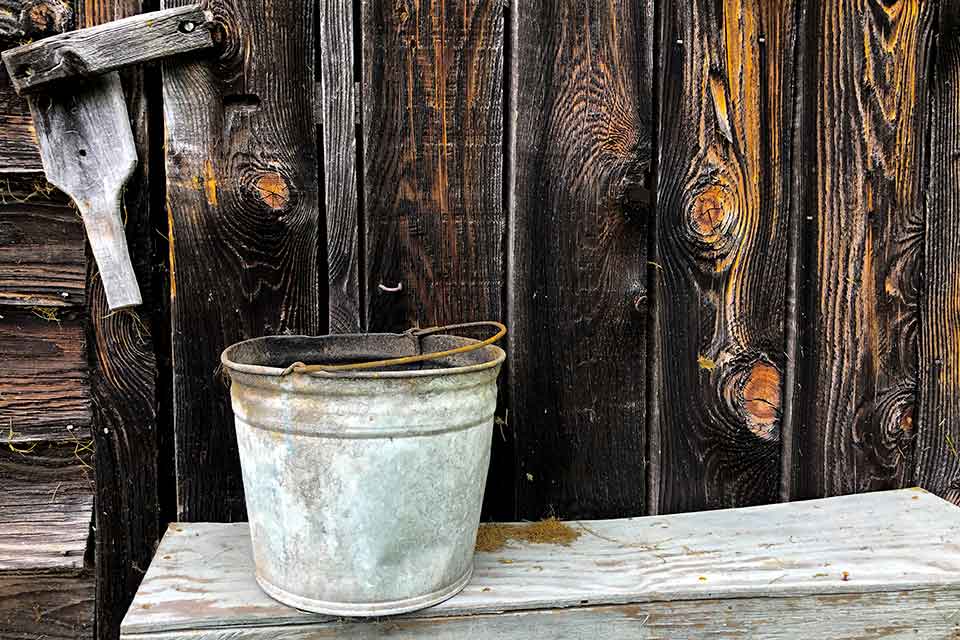
Shea: With you as founder and executive director, the Women of Appalachia Project has been going on now for more than a decade, with gatherings to celebrate the work of literary and visual art and an annual publication, Women Speak. You’ve described the group as a “sisterhood . . . [who] wield our words and images to challenge ill-conceived prejudices used as the gauge by which Appalachian women are judged.” Is that sisterhood what keeps it going?
Gunter-Seymour: The success of the Women of Appalachia Project is based on the work of every single woman who does, has, or will someday take part, whether as a participant, volunteer, partner, or supporter. We are a thriving network and, yes, a sisterhood in every sense of the word, working toward the same goal—to lift up Appalachia and showcase it in all its magnificent glory. No need for extreme acts, protest signs, or marches. The work speaks for itself.
Shea: I think the commitment you have to women is so beautifully expressed in the dedication to A Place So Deep Inside America It Can’t Be Seen: “To every woman in my life who has befriended, loved and looked after me, I hold you dear.” How did you settle on that?
Gunter-Seymour: You know that just spilled out of me. I’m getting tears even now! I’m not saying there haven’t been men, but the women have been particularly amazing and uplifting. Everything that I am is because so many people have touched me—I’ve had these marvelous people in my life who are so giving and loving and caring and kind. It’s just honest—I couldn’t have said anything else . . .
Shea: Your poetry is filled with wonderful women characters. Fanny June is one of my favorites: you’ve said that the name reflects your grandmother Fanny and your birth month of June, right? Ruby May is a combo of your grandmother and mother. Lots of grandmothers in here—and you’ve said you “come from a long line of strong, ornery women.” Do you think of your poems as tributes, memorials, and maybe resistance against stereotypes?
Gunter-Seymour: I hope so—that’s the way I view them. I hope they’re giving people insight. . . . You get one author who’s telling you one story, and you believe it, hook, line, and sinker. I wanted to write about the kind of folks unlike those found in Vance’s work. I am still storytelling. I think part of that is that I’m Appalachian—and we’re storytellers. That’s a stereotype of us I can accept. We do love to tell our stories, and for a long time, that’s how we kept our family history—that and the family Bible. I think that what I did when I changed from journaling to poetry, I took the storytelling with me. I’m very much a narrative poet. When I write a poem, I’m sitting down to tell a story. I want there to be a bit of activism, a bit of spunk, a lot of truth . . .
When I changed from journaling to poetry, I took the storytelling with me.
Shea: There are so many beautiful lines in your poetry about the landscape, the place where you grew up and live. I’m especially struck by metaphors: for example, “earth spread naked in harvest light” and “Soon winter will open her eyes” (“To the Bone”); “morning flexing its body with a breeze” (“Granddaughter”). It’s as though you feel the physicality—and humanity—of the natural setting that surrounds you. It’s evocative and tender—but it can be pretty funny: “we hiked up our skirts, shimmied like a mash of malted barley in wild yeast” (“My Friend Loraine”). You have such a reverence that comes through in the poetry for the land, the place.
Gunter-Seymour: I think that’s what makes us Appalachian—I think anybody who claims they’re Appalachian has that same deep connection to the land and the people. Maybe not exactly like mine, but they have those roots in the soil, a reverence for the land. That’s what I was taught, what came down through the families. You had to be able to grow enough food and raise the appropriate number of animals to sustain yourself and your family—very serious business. The metaphors people use is the way you see the world—and that’s part of what I see in the language.
Shea: Your titles are provocative, often surprising. Some of the titles predict the poems, like “Trigger Warning” or “Hooper Ridge Girl.” But some of them are downright puzzling—in their connection to the poem (e.g., “Last Night the Chime of Tree Frogs”). What comes first: the poem or the title?
Gunter-Seymour: Usually the poem, and then I suffer over the titles. I know there’s a title waiting for it, but I just have to stumble upon it. Lots of times, I write a poem, yet it’ll be a month figuring out the title. I spend a lot of time on the poems, but sometimes I feel I spend as much time on the titles.
Shea: So many of your poems seem to be about transformation. Some are inflection points, shifts in perception, sometimes alternative identities. Some are about the emergence of an utterly different self: “In some languages to be carried / is the same as to fly”—the gorgeous ending lines to “Pain-Ripened.” In others, perhaps the most poignant, there’s a specific causality, in the case of your son the painful changes that military experience brought to him. As you say in the final lines of your title poem, “Everything alive aches for more.” How deliberately do you think about transformations as you are writing?
It’s a way of lifting oneself up beyond the worst ever.
Gunter-Seymour: It’s a way of lifting oneself up beyond the worst ever. Again, I’m trying to put a plea out there that because I’m labeled Appalachian doesn’t mean I’m a whole lot different than you. So I’m also kind of talking about racism in a sense—trying to point out, when you are trapped, you can—all on your own self—be active, you can shed your clothes, you can sway, you can dream that you would be lifted up. I think you’ve hit it on the head—transformation and change, being a strong woman and helping to bring about change.
Shea: I wouldn’t call you a political poet, yet you are absolutely amazing when it comes to recognizing a need and calling attention to it. The Women of Appalachia Project is only one of many examples, but maybe the biggest splash was “Geaux Jeaux,” the poem you wrote in response to the Heisman speech that the athlete Joe Burrow gave. That poem went viral and raised thousands of dollars for your local food bank. How did that come about?
Gunter-Seymour: At the time [2019] I was the poet laureate of Athens, Ohio. I thought to myself that this young man (Joe Burrow) gave this amazing Heisman Trophy speech and in the middle of it talked about poverty in Athens County. I knew I had to write a poem or not be able to hold my head up as poet laureate. A day or two later, his friend Will Drabold put up a Facebook fundraiser—and Will thought some local people might be interested in donating. Lo and behold, it took off and was going like gangbusters; then it just drizzled out and they were about $30,000 shy of the half million they hoped to raise. I put the poem on the Athens Poet Laureate Facebook page and on Twitter—and within twenty-four hours over 100,000 people saw it, donated, and the fund ended up raising over $500,000.
Now the Foundation for Appalachian Ohio has created an endowment to grow the fund with the goal of doing away with food insecurity in Athens County for good. All because Joe Burrow is an exquisite young man—not just as an athlete. He thought it was important to say to kids in Athens County, “This could be you.” His sportsmanship exceeded anything anyone could ever dream of. I had no idea the poem would be so impactful, but I will tell you that it was written from my heart. The poem came to me authentically because I know what it is to be poor.
Shea: Another project that seems to be broadening your audience and influence is the anthology your Academy of American Poets grant will support, entitled I Thought I Heard a Cardinal Sing: Ohio’s Appalachian Voices. How did you arrive at this idea, and how is it different from the Women of Appalachia Project?
Gunter-Seymour: I researched but could not find a reference to an anthology specifically showcasing Ohio Appalachian poetry. I wanted to focus on our unique culture as Appalachians located in central Appalachia—our “roots” steeped in southern culture but having evolved as they have been applied to northern ways—with the hope that this collection of poetry will bring joy, educate, and open minds. Ultimately, I hope it will create a nucleus of understanding that has the potential to expand far beyond Ohio’s state boundaries.
Shea: You seem to have such faith in the power of language, especially poetry, to bring about change both within individuals and the community. In addition to these various activities we’ve already discussed, you’ve worked with Ohio’s Department of Mental Health and Addiction Services Peer Recovery Support as well as the state’s Department of Rehabilitation and Corrections. How did poetry come into those efforts?
Gunter-Seymour: When I applied for the laureate position, what I said I would do, what I wanted to do, was work with teens and adults in recovery because of the opioid epidemic. It was very important to me to do that work. The governor made that possible by clearing the way for me to do poetry workshops with folks in the prison systems and those dealing with addiction recovery and going into the recovery homes. Overall, I did promise the governor I would spread the gospel of poetry to all Ohioans, all over the state, and I’ve tried to do that.
Shea: You’ve described yourself as a “nonconfrontational activist.” Is that paradox how you manage to keep writing your own poetry (assuming you have) while you’re working in the community as the state laureate?
Gunter-Seymour: Yes, I do think I am and likely always will be a “nonconfrontational activist,” no matter my role. I have steadily focused on my own writing in the midst of my laureateship duties thanks to an intimate group of poet friends. We meet weekly, workshop each other’s poems, encourage each other, listen to hardships, lift each other up. As a result, I just had my newest manuscript, Alone in the House of My Heart, accepted for publication by Terrapin Books, scheduled to launch in late spring 2022.
Shea: So, given all this work you’re doing and will continue to do, I wonder if you’ve made the title, A Place So Deep Inside America It Can’t Be Seen, no longer true. Don’t you think that you’ve made a whole lot of people, inside and outside of Ohio, “see” Appalachia—in a new light?
Gunter-Seymour: I’d like to think I’ve contributed to progress toward new conversations. There is a lot more work to be done, and I am certainly not the only voice. I am so proud of my people and my peers. Circumstances have provided me with a platform; I feel the call to serve. It’s really just that simple.
Editorial note: This interview is the result of Zoom calls, emails, and face-to-face conversations between June and September 2021. The title of the interview comes from Gunter-Seymour’s poem “I Come from a Place So Deep Inside America It Can’t Be Seen,” published on Verse Daily.
